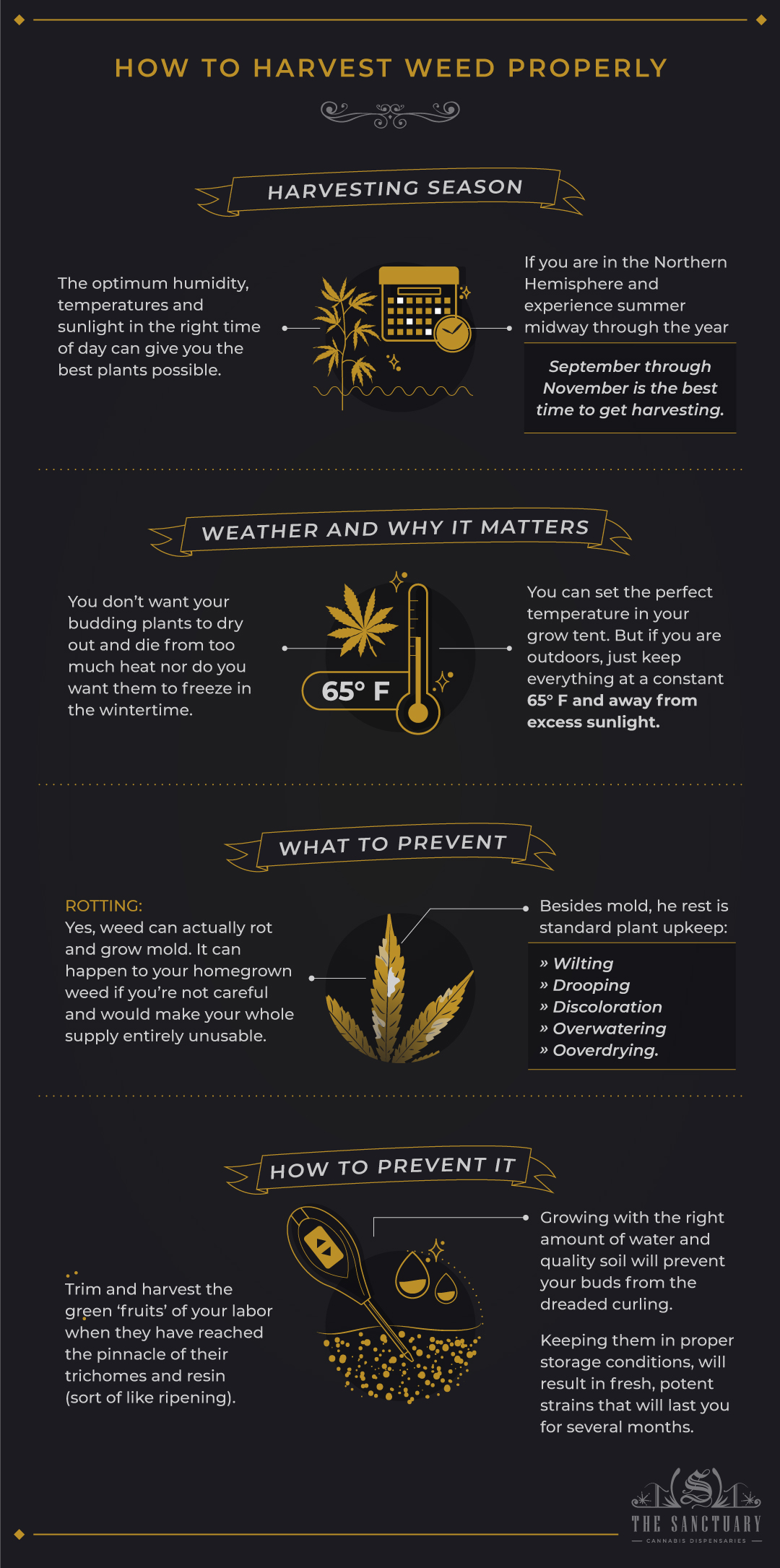It has been said to ‘Never get high on your own supply’, but in no way should that apply to growing and harvesting your own weed: It is not only easy enough to do at home (working around even the busiest schedules), but you can do it reasonably inexpensively and come out with fresh buds that rival even your most adored strains.
As you may have guessed, the only way you can really go from growing to smoking is keeping your buds fresh as they grow. Worry not, young grassmoker: Keeping your new budding plants from the walk of shame to the trash is as easy as just about any other homegrown plant, so get your green thumb ready and prepare to harvest some weed.
Why Harvest Weed?
You might be thinking, “That sounds cool but isn’t it easier to just buy weed from a dispensary?” That may be true, but it does mean that there are no benefits to harvesting your own supply: One of many being the convenience of having a fresh supply of weed (when harvesting is all said and done) right in your literal backyard.
No additional purchase necessary, no need to place an order or wait in lines and depending on how much you grow, you could have over a month’s supply grown right from your own home.
Imagine if you got into harvesting a few months before the pandemic: You smoke from the last of your ganja while growing some more in your new tent, then you just learned that all dispensaries are about to close (indefinitely) and you cannot leave your house. At the same time, your first batch of homegrown weed is ready to be harvested. Crisis averted!
Is it Easy to Do at Home?
Even if you’re extremely busy, you just need to clear a few feet of space on one of your pantry or closet shelves, a daily reminder or two that you can set on your phone (to adjust grow lighting and watering) and only a few specialized parts to shape into a box: That is literally how easy it is to grow weed at home, and the harvesting mainly comes from cutting and trimming branches.
If that sounds like something you can do at home, then we have news for you: You can! As soon as you get the materials to build your grow tent along with a good pair of clippers, you are ready to start growing and harvesting.
How to Harvest Weed Properly
 Just about anyone can walk up off the street, pour some water on seeds and watch a tiny flower or plant grow. Admittedly, growing cannabis is not a strenuous process but there are a few more things to consider than growing something like flowers (harvesting your own weed is closer to harvesting fruits or vegetables).
Just about anyone can walk up off the street, pour some water on seeds and watch a tiny flower or plant grow. Admittedly, growing cannabis is not a strenuous process but there are a few more things to consider than growing something like flowers (harvesting your own weed is closer to harvesting fruits or vegetables).
Harvesting Season
It all comes down to when you harvest your weed, especially if you are growing outdoors, so that the optimum humidity, temperatures and sunlight in the right time of day can give you the best plants possible. Assuming that a lot of you are in the Northern Hemisphere and experience the warm summer midway through the calendar year, this makes September through November the best time to get harvesting.
Weather and Why it Matters
Even if you are not a botanist, you are sure to know that weather is crucial for a successful harvest. You do not want your budding plants to dry out and die from too much heat nor do you want them to freeze in the wintertime.
Outdoor growing is great when it’s done right, but this is where indoor growing cuts ahead: You can literally set the perfect temperature in your grow tent and never have to worry about unseasonal weather. But if you are outdoors, just keep everything at a constant 65° F and away from excess sunlight.
What to Prevent
Like most things in life, the thing you most want to prevent is rotting. Yes, weed can actually rot and grow mold. Granted, it takes a good amount of time and very poor growing or storage conditions for it to happen, but it can happen to your homegrown weed if you’re not careful and would make your whole supply entirely unusable.
Why do all of that hard work just to throw it all away? Literally! With mold being the most obvious thing to avoid, the rest is just your standard plant upkeep: preventing wilting, drooping, discoloration, overwatering (which will grow mold faster than your seeds) and overdrying.
How to Prevent It
Some homegrown plants are ready to harvest in as little as 8 weeks, some in 12 weeks. 10 being the average, but the key is to trim and harvest the green ‘fruits’ of your labor when they have reached the pinnacle of their trichomes and resin (sort of like ripening).
Growing with just the right amount of water and quality soil will prevent your buds from the dreaded curling. Afterwards, harvesting your new buds when they reach the height of their seasonal maturity, then keeping them in the proper storage conditions, will reward you with fresh, potent strains that will last you for several months.
What do I need to Harvest Weed?
The supplies that you need to get this show on the road are not that far beyond your seeds, a rich soil, the proper clippers and the materials you need for building a grow tent (if you are growing indoors): “Not far beyond” meaning that is basically everything you need.
How Much Would it Cost?
The only straightforward answer that we could give is based on an extremely conjectural average. While the national average of the cost of growing weed is about $214 a pound, this could drastically change based on your soil, seeds, the complexity of your tent, the number of plants you are growing, etc.
A full-on, cannabusiness-sized operation utilizing an entire greenhouse will run you into the millions or more (depending on the scale of the operation). But if this is your very first harvest and it is just for you and your roommates(s), you can amply cover the cost of your closet-sized harvest with your tax refund or less.






